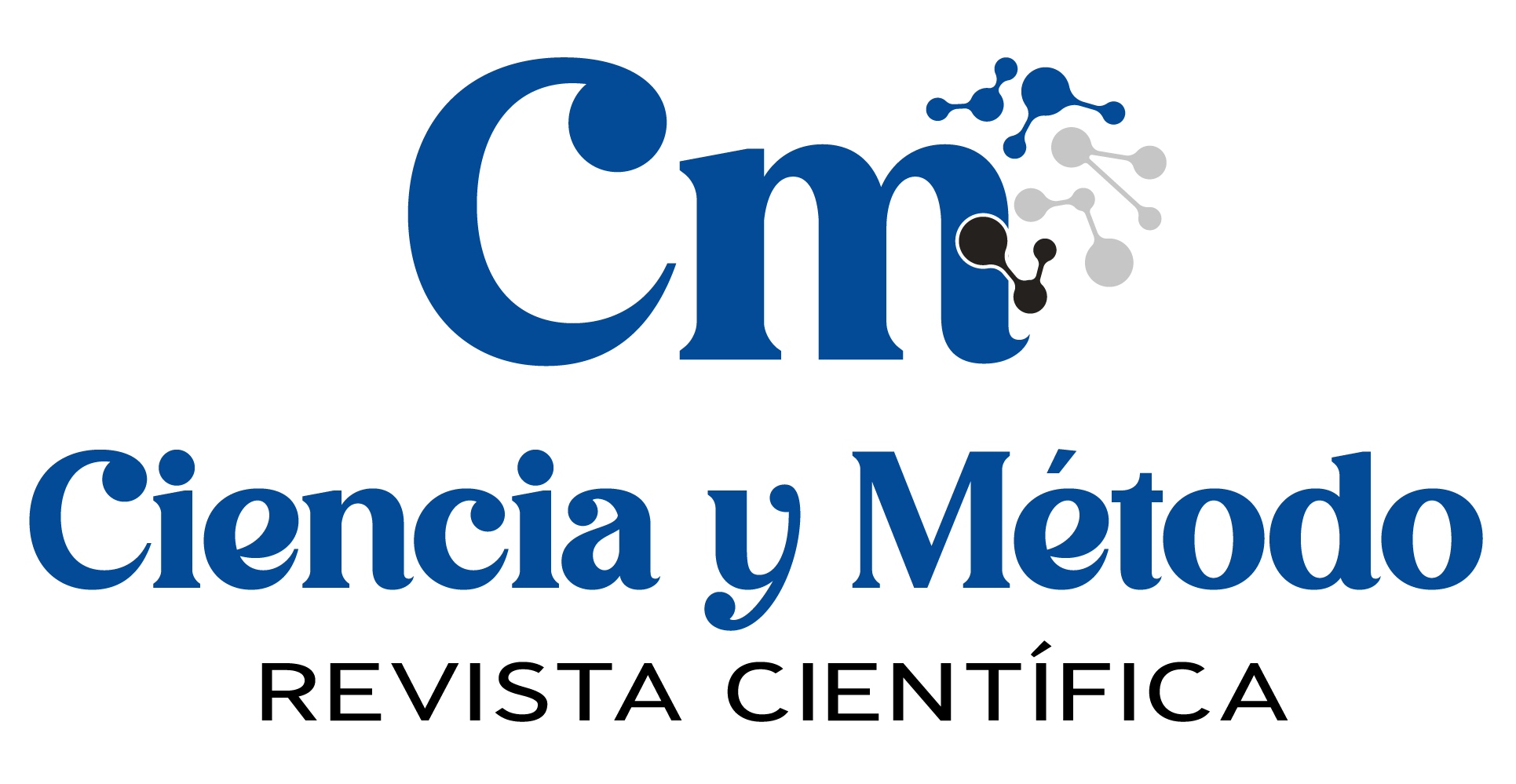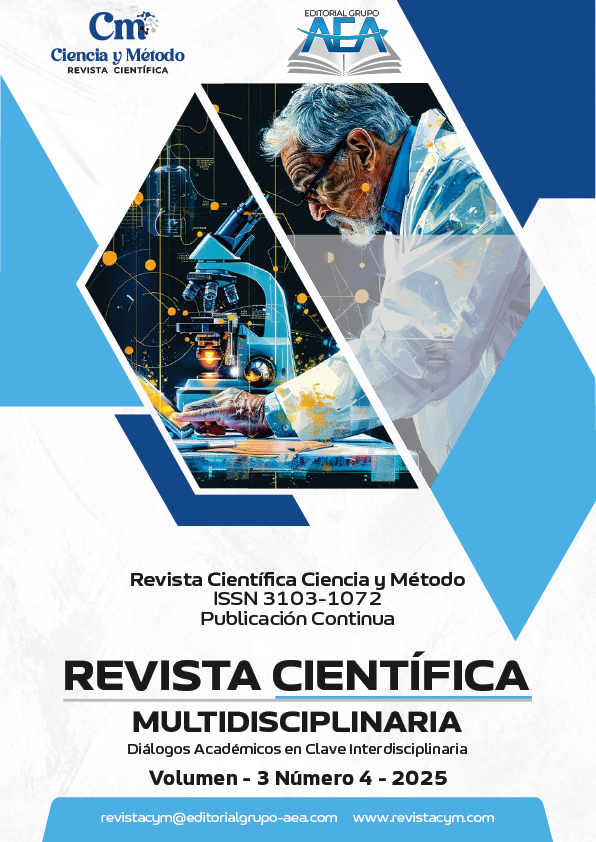Analysis of solar resources in San Francisco de Paján (Ecuador): foundations for the implementation of sustainable photovoltaic systems
Main Article Content
Abstract
This study analyzes the available solar resource in the community of San Francisco de Paján, with the purpose of assessing its applicability in renewable energy projects, particularly community-based photovoltaic systems. For this purpose, historical data on solar irradiation, cloud cover, and temperature (2010–2024) were collected from the NASA POWER platform. The information was subjected to quality control and subsequently analyzed using statistical methods and time series models, complemented with geographic information system tools. The results show that the average daily global irradiation in the community ranges between 3.3 and 3.85 kWh/m²·day, with seasonal peaks in March and April exceeding 4.0 kWh/m²·day. The linear trend analysis indicates a progressive decrease of 0.01804 kWh/m²·day per year, implying a moderate reduction towards 2050, with projected values between 3.2 and 3.3 kWh/m²·day. Nevertheless, these levels remain technically viable for the implementation of small- and medium-scale photovoltaic systems.
Downloads
Article Details
Section

This work is licensed under a Creative Commons Attribution-NonCommercial 4.0 International License.
How to Cite
References
Anchundia, M. J., Alcívar, M. B., & Mendoza, L. A. (2024). Optimización de la captación solar mediante sistemas de seguimiento en la costa ecuatoriana. Revista Científica Amazónica, 12(1), 55–67. https://doi.org/10.32719/26312816.2024.12.1.5
Echegaray-Aveiga, R. C., Masabanda-Caisaguano, M., Rodríguez Espinosa, F., Toulkeridis, T., & Mato, F. (2018). Solar Energy Potential in Ecuador. Proceedings of the IEEE 5th International Conference on eDemocracy & eGovernment (ICEDEG 2018). https://doi.org/10.1109/ICEDEG.2018.8372318
Guerrero-Calero, J. M., Diego Raul, D. R., Marco Antonio, M. A., & Gema Elizabeth, G. E. (2023b). Energías limpias y desarrollo sostenible: una revisión sobre las tendencias y desafíos actuales. Innova Science Journal, 1(1), 38–50. https://doi.org/10.63618/omd/isj/v1/n1/9 DOI: https://doi.org/10.63618/omd/isj/v1/n1/9
Guerrero-Calero, J. M., et al. (2024). Potencial fotovoltaico para sistemas de bombeo de agua en la comuna Joa, Manabí, Ecuador. Journal of Economic and Social Research, 2(1), 45–59. Disponible en: https://www.economicsocialresearch.com/index.php/home/article/view/119 DOI: https://doi.org/10.55813/gaea/jessr/v4/n3/119
Guerrero-Calero, J. M., Gras-Rodríguez, R., Cruz-Macías, B., & Cabrera-Verdezoto, R. (2023c). Análisis del potencial fotovoltaico de los campus universitarios de la Universidad Estatal del Sur de Manabí, Jipijapa. Revista Científica de la UESM, 6, 333–341. https://dialnet.unirioja.es/servlet/articulo?codigo=9177316 DOI: https://doi.org/10.33386/593dp.2023.6.2080
Guerrero-Calero, J. M., Santos-Díaz, A. P., Figueroa-Torre, D. A., & Pulluquitin-Ramírez, M. E. (2023a). El papel de las energías renovables en la reducción de la huella de carbono. Space Scientific Journal of Multidisciplinary, 1(2), 1–14. https://doi.org/10.63618/omd/ssjm/v1/n2/11 DOI: https://doi.org/10.63618/omd/ssjm/v1/n2/11
Haro-Báez, A. G., et al. (2023). The Case of Puerto Ayora in Santa Cruz Island, Galapagos. Sustainability, 15(18), 13769. https://doi.org/10.3390/su151813769 DOI: https://doi.org/10.3390/su151813769
Hernández-Moro, J., & Martínez-Duart, J. M. (2013). Analytical model for solar PV and CSP electricity costs: Present LCOE values and their future evolution. Renewable and Sustainable Energy Reviews, 20, 119–132. https://doi.org/10.1016/j.rser.2012.11.082 DOI: https://doi.org/10.1016/j.rser.2012.11.082
Kost, C., Shammugam, S., Fluri, V., Peper, D., & Schlegl, T. (2021). Levelized Cost of Electricity – Renewable Energy Technologies. Fraunhofer Institute for Solar Energy Systems ISE. https://doi.org/10.5445/IR/1000137842
Lizarraga-Aguirre, H. R. (2024). Evaluación de materiales sostenibles en la construcción de pavimentos urbano. Revista Científica Ciencia y Método, 2(1), 41-54. https://doi.org/10.55813/gaea/rcym/v2/n1/30 DOI: https://doi.org/10.55813/gaea/rcym/v2/n1/30
López-González, A., Esparza, J., & Zárate-Toledo, E. (2020). Community-based solar energy projects in rural Mexico: Social acceptance and energy justice. Energy Research & Social Science, 70, 101736. https://doi.org/10.1016/j.erss.2020.101736 DOI: https://doi.org/10.1016/j.erss.2020.101736
Ministerio de Energía y Recursos Naturales No Renovables. (2019). Mapa Solar del Ecuador. Quito, Ecuador. Disponible en: https://www.sciencedirect.com/science/article/pii/S2211467X22000979
Pereira, E. B., Martins, F. R., Gonçalves, A. R., Costa, R. S., & Lima, F. J. (2021). Solar and wind energy resources over South America under future climate change scenarios. Renewable Energy, 164, 1092–1108. https://doi.org/10.1016/j.renene.2020.09.103 DOI: https://doi.org/10.1016/j.renene.2020.09.103
REN21. (2022). Renewables 2022 Global Status Report. Paris: REN21 Secretariat. https://www.ren21.net/reports/global-status-report/
Rodríguez Espinosa, F., Toulkeridis, T., Mato, F., & Echegaray-Aveiga, R. C. (2018). Solar Energy Potential in Ecuador. 2018 IEEE 5th International Conference on eDemocracy & eGovernment (ICEDEG). https://doi.org/10.1109/ICEDEG.2018.8372318 DOI: https://doi.org/10.1109/ICEDEG.2018.8372318
Rodriguez-Vizuete, J. D., Viteri-Ojeda, J. C., & Villa-Feijoó, A. L. (2024). Adopción de tecnologías sostenibles en infraestructuras de tecnologías de la información. Revista Científica Ciencia y Método, 2(1), 55-67. https://doi.org/10.55813/gaea/rcym/v2/n1/31 DOI: https://doi.org/10.55813/gaea/rcym/v2/n1/31
Saltos Suárez, C. A., & Mieles Giler, J. W. (2024). Análisis del potencial de irradiancia solar en el cantón Portoviejo, Ecuador (2012–2022). Pentaciencias, 6(5), 194–202. https://doi.org/10.59169/pentaciencias.v6i5.1203 DOI: https://doi.org/10.59169/pentaciencias.v6i5.1203





